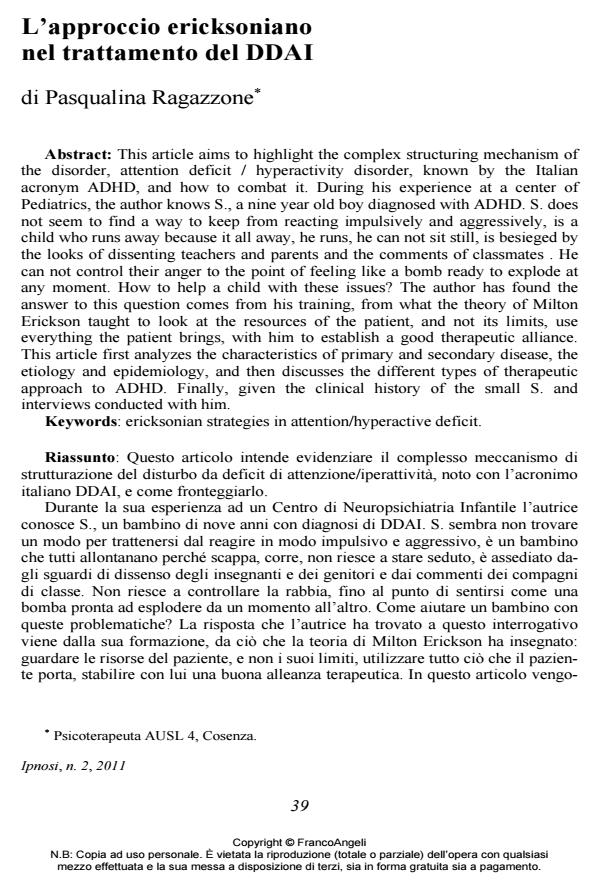L’approccio ericksoniano nel trattamento del DDAI
Journal title IPNOSI
Author/s Pasqualina Ragazzone
Publishing Year 2012 Issue 2011/2
Language Italian Pages 16 P. 39-54 File size 429 KB
DOI 10.3280/IPN2011-002003
DOI is like a bar code for intellectual property: to have more infomation
click here
Below, you can see the article first page
If you want to buy this article in PDF format, you can do it, following the instructions to buy download credits

FrancoAngeli is member of Publishers International Linking Association, Inc (PILA), a not-for-profit association which run the CrossRef service enabling links to and from online scholarly content.
This article aims to highlight the complex structuring mechanism of the disorder, attention deficit / hyperactivity disorder, known by the Italian acronym ADHD, and how to combat it. During his experience at a center of Pediatrics, the author knows S., a nine year old boy diagnosed with ADHD. S. does not seem to find a way to keep from reacting impulsively and aggressively, is a child who runs away because it all away, he runs, he can not sit still, is besieged by the looks of dissenting teachers and parents and the comments of classmates . He can not control their anger to the point of feeling like a bomb ready to explode at any moment. How to help a child with these issues? The author has found the answer to this question comes from his training, from what the theory of Milton Erickson taught to look at the resources of the patient, and not its limits, use everything the patient brings, with him to establish a good therapeutic alliance. This article first analyzes the characteristics of primary and secondary disease, the etiology and epidemiology, and then discusses the different types of therapeutic approach to ADHD. Finally, given the clinical history of the small S. and interviews conducted with him.
Keywords: Ericksonian strategies in attention/hyperactive deficit.
Pasqualina Ragazzone, L’approccio ericksoniano nel trattamento del DDAI in "IPNOSI" 2/2011, pp 39-54, DOI: 10.3280/IPN2011-002003